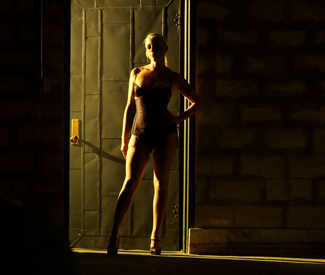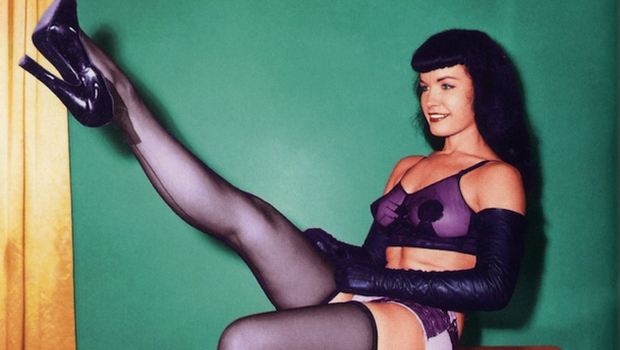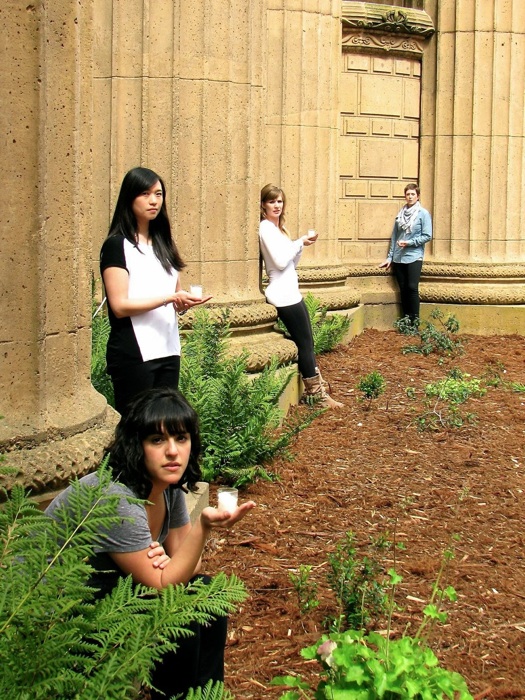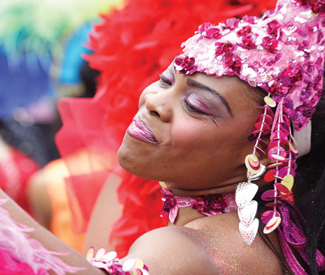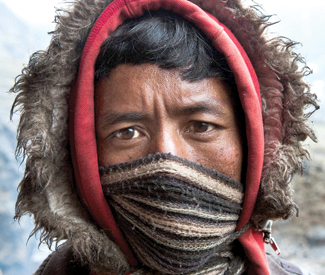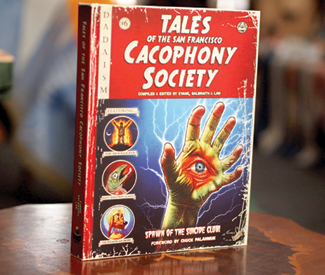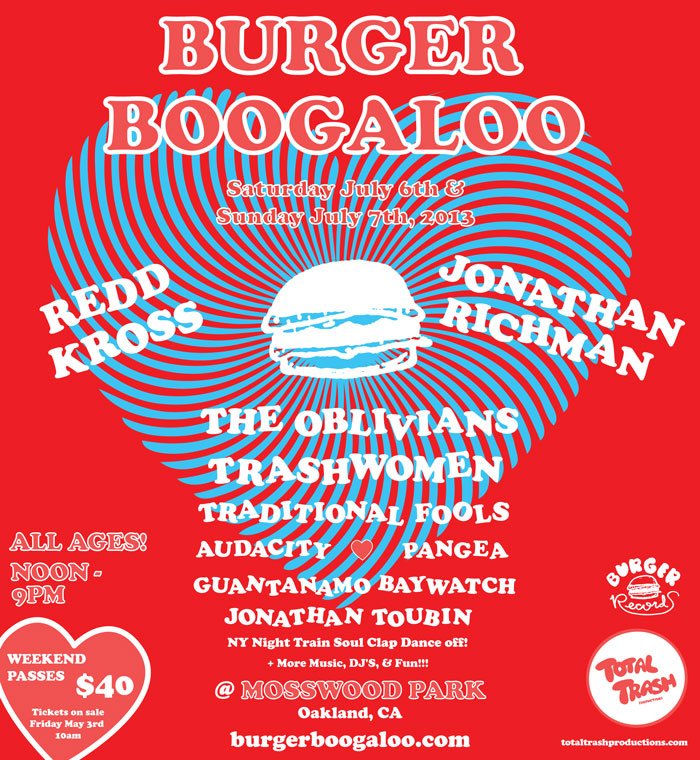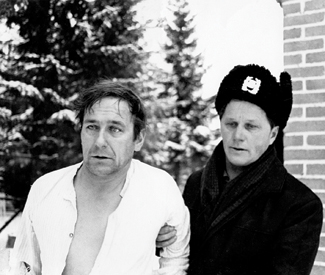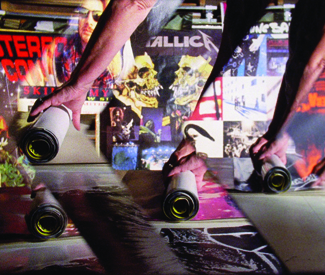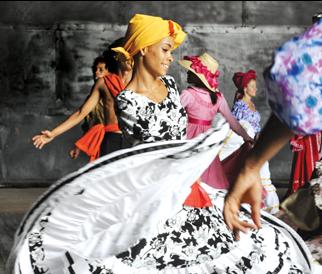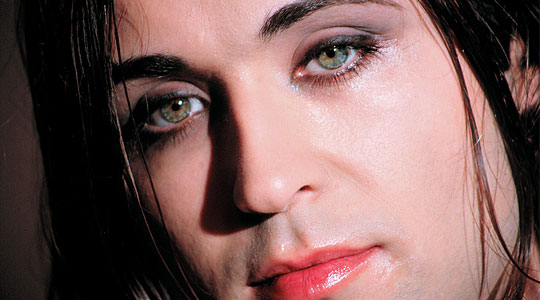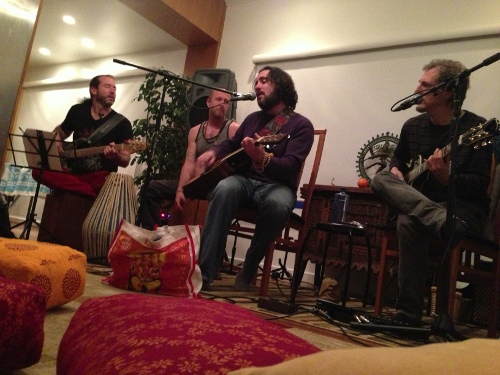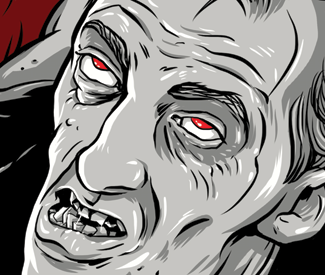caitlin@sfbg.com
MAY 25-26
Carnaval Parade: Starts at 24th St. and Bryant, SF. Sun/26, 9:30am, free; Festival: Harrison between 16th and 24th Sts., SF. Sat/25-Sun/26, 10am-6pm, free. www.carnavalsf.com. The Mission’s most colorful processional and music fest had to change hands this year to avoid financial ruin. Show your delight at its survival by showing up in force for the samba, sequins, and spectacle.
MAY 30-JUNE 5
Green Film Festival Various locations, times, prices, SF. www.sfgreenfilmfest.org. An outdoor screening of a documentary on the tiny house movement is one highlight of this year’s 50 film-program exploring environmental issues today.
JUNE 1
Latino Comic Expo Cartoon Art Museum, 655 Mission, SF. www.latinocomicsexpo.com. 11am-5pm, free with $7 museum admission. In its third year, the popular convergence of Latino panel-makers is dedicated to the memory of underground scribbler Spain Rodriguez.
Chocolate and Chalk Art Festival 1400-1800 Shattuck, Berk. www.anotherbullwinkelshow.com/chocolate-chalk-art. 10am-5pm, free entry, 20 chocolate tickets $20. Picante habanero chocolate chunks gelato? Chocolate ricotta pizza? Discover the possibilities of gourmet cacao and create a sidewalk chalk masterpiece at this fest.
JUNE 1-2
Union Street Festival Union between Gough and Steiner, SF. www.unionstreetfestival.com. 10am-6pm, free. Union Street pops with its 37th annual street fair. Browse craft vendors, cruise your neighbors, and snack to the tunes of live jazz from local bands.
JUNE 6-23
SF Doc Fest Various locations, times, prices. www.sfindie.com. Burning Man and Bettie Page flicks mark the program for this real-life film fest.
JUNE 8-16
San Mateo County Fair San Mateo County Event Center, 2495 South Delaware, SF. June 8, 9, 11 and 14-16, 11am-10pm; June 10, 12-14, noon-10pm, $7–$10 single day, $17-22 season pass. www.sanmateocountyfair.com. Morris Day, an Aerosmith cover band, and Three Dog Night perform alongside a youth piano competition, bareback pony riding, floral art displays, and more at this traditional county fair.
JUNE 9
Haight Ashbury Street Fair Haight between Stanyan and Masonic, SF. www.haightashburystreetfair.org. 11am-5:30pm, free. The groovy posters don’t lie — this classic, hippie-flavored street fair is great place to watch a battle of the band in the sun and ruminate on whether you can ever really have too much tie-dye.
JUNE 14-16
Queer Women of Color Film Festival Brava Theater, 2789 24th St., SF. www.qwocmap.com. From Hawaiian to Navajo culture, this festival of 55 shorts in five programs shows the QWOC experience from a global perspective.
JUNE 15-16
North Beach Festival North Beach neighborhood, SF. www.sresproductions/north_beach_festival.html. 10am-6pm, free. Harken back to North Beach’s days as a close-knit Italian community with this venerable street fair, featuring a traditional blessing of the animals at the National Shrine of St. Francis de Assisi, street painting, music, and snacks galore.
Marin Art Festival Marin Civic Center, 95 Buena Vista, Mill Valley. www.marinartfestival.com. 10am-6pm, $10. This showing of 350 fine artists is a fine excuse to ramble in the sun by the UFO-esque, Frank Lloyd Wright-built Marin Civic Center.
Crystal Fair Fort Mason Festival Pavilion, SF. www.crystalfair.com. June 15, 10am-6pm; June 16 10am-4pm, $6. Over 40 vendors of crystals, jewelery, metaphysical well-being make this the place to get your woo on.
JUNE 16
SummerStruck Monterey Fairgrounds, 2004 Fairgrounds Rd, Monterey. www.summerstruckfestival.com. 11am-6pm, $22.50-40. Twangers unite — this debut year lineup of Jason Michael Carroll, American Young, Buck Ford, and more promises to be stocked with multi-gallon headwear and boots like you wouldn’t believe.
JUNE 16-AUGUST 12
Stern Grove Festival Stern Grove, 19th Ave. and Sloat, SF. www.sterngrove.org. Every Sunday, 2pm, free. Deltron 3030 with Kid Koala and Del the Funky Homosapien, Boz Scaggs, and the Symphony and Ballet’s yearly performances are all phenom draws at our favorite, free park ‘n’ picnic weekly summer concert soiree.
JUNE 20-30
Frameline 37 Various locations, times, prices. www.frameline.org. SF’s premier LGBT film festival surges back hard with historical docs, animated features, and more. The opening night gala features Concussion, a head trauma-driven sexy drama. Fest closes with GBF, an at-times comical look at coming out and getting popular in high school.
JUNE 21-23
Sierra Nevada World Music Festival Mendocino County Fairgrounds, 14480 Highway 128, Boonville. www.snwmf.com. $60-75 one-day festival pass, $170 three-day festival and camping pass. Those looking for a music fest with camping to which to bring their brood would be well-advised to choose SNWMF — a lineup headed by Damian Marley features sounds from across the world and a more mellow crowd.
JUNE 22
Berkeley World Music Festival People’s Park, 2556 Haste, Berk., 1-6pm, free; Telegraph Avenue businesses, 1-9pm, free. www.berkeleyworldmusicfestival.org. Amble along and around Telegraph Avenue for a plethora of free shows, from Tunisian MC Rai at People’s Park to Vukani Mawethu Choir’s South African harmonies at the Berkeley Art Museum, with smaller concerts at businesses in between.
Mt. Tam Jam Mountain Theater, Mount Tamalpais State Park. www.tamjam.org. Noon-7pm, $50-100. After-party, 10:30pm, $30. Galactic, Cake, Taj Mahal Trio, and more rock this fundraiser for Mount Tam State Park — at a venue that hasn’t housed a rock concert since 1967.
Summer Sailstice Encinal Yacht Club, 1251 Pacific Marina, Alameda. www.summersailstice.com. 10:30am-8pm. Join the boating set to celebrate this worldwide day of sailing culture. In the Bay, view America’s Cup boats, guest ride a vessel, take in live tunes, and more.
JUNE 22-AUGUST 10
Stanford Jazz Festival Various venues, times, prices. www.stanfordjazz.org. Lil’ ones can learn more about this venerable American music genre at a special kids concert series and educational offerings. Older fans will get their fix at a plethora of concerts featuring up-and-comers (like Taylor Eigsti and Julian Lage), offbeat geniuses (Savion Glover), and legends (hey, Herbie Hancock).
JUNE 29-30
San Francisco Pride Various venues, times, prices. www.sfpride.org. Should the year’s champion-level PR idiocy of naming, then reneging on Bradley Manning as grand marshal leave you with a bad taste, check out the many, amazing unofficial queer parties, readings, and exhibits that rock the city the last week in June.
JUNE 29-SEPTEMBER 22
Shakespeare in the Park Various times and Bay Area venues. www.sfshakes.org. Why you live in the Bay Area: exquisite cultural offerings like the 30th year of free Bard offerings in peaceful park settings.
JULY 6-7
Burger Boogaloo Mosswood Park, Broadway and West Arthur, Oakl. www.burgerboogaloo.com. Noon-9pm, $40 weekend pass. Burger Records just keeps outdoing itself. It has fests around the country that bring together an elite mix of sloppy, legendary, and up-and-coming surf, garage, fun punk, and slack doo-wop acts.
Fillmore Jazz Festival Fillmore between Jackson and Eddy, SF. www.fillmorejazzfestival.com. 10am-6pm, free. Kim Nalley, Bayonics, Crystal Money Hall typify the wide-ranging sounds heard at this free, three-stage celebration of Fillmore’s jazztastic past.
JULY 18-21
Silent Film Festival Various times and prices. Castro Theatre, 429 Castro, SF. www.silentfilm.org. Spend the weekend immersed in loaded looks and dialogue cards at this lineup of classic quiets.
JULY 18-28
Midsummer Mozart Various venues, times, prices. www.midsummermozart.org. Churches, missions, wineries, and the Legion of Honor all host concerts of Mozart’s genius for this fest’s 2013 season.
JULY 19-21
Sunset Campout Belden Town, Calif. www.sunsetcampout.com. Germany’s Dixon and Robag Wruhme are the early announced performers at party crew Sunset’s stellar camping trip — perfect for dancefloor stalwarts who can’t stomach the crowds at larger music fests.
JULY 25-AUGUST 12
Jewish Film Festival Various venues, times, prices. www.sfjff.org. “Rebels, rabbis, and reubens” seems about as amazing a descriptor as you need for this yearly celebration of the Chosen on film.
JULY 26-28
Gilroy Garlic Festival Christmas Park, Gilroy. www.gilroygarlicfestival.com. 10am-7pm, $17. Fear not having pungent breath at this classic small-town fest. Garlic-inflected free ice cream, cook-offs, and celebrity chef appearances make it the order of the day.
JULY 27-28
Berkeley Kite Festival Cesar Chavez Park, Berkeley Marina. www.highlinekites.com. 10am-6pm, free. World record-sized kites, flying lessons, aircraft crafting, and more at this celebration of soaring craft.
Renegade Craft Fair Fort Mason Center Festival Pavilion, SF. www.renegadecraft.com. 11am-7pm, free. Bring your ducats and splurge on DIY presents for all your 2013 birthdays, anniversaries, and plain old “I appreciate you” moments.
JULY 28
Up Your Alley Dore between Howard and Folsom, SF. www.folsomstreetfair.com/alley. 11am-6pm, $7 suggested donation. Hey daddy, cruise the local talent at this leather fair before the happy chaos of big sister Folsom Street Fair hits in September.
JULY 28-AUGUST 4
SF Chefs Union Square, SF. www.sfchefsfoodwine.com. Various times and prices. Sample the city’s best eats and learn from the best in expert demos and classes at this food festival.
AUGUST 3-4
Aloha Festival San Mateo County Event Center, 1346 Saratoga, San Mateo. www.pica-org.org. 10am-5pm, free. No booze allowed at this celebration of Pacific Islands culture, but you won’t miss it: tasty plates, infotaining activities for the little ones, and lots of music and performance rock.
Oakland Art and Soul Frank Ogawa Plaza, Oakl. www.artandsouloakland.com. Aug. 3, noon-8pm; Aug. 4, noon-6pm, $10-15. The line-up will be announced in June for this East Bay music and food fest, where the tunes range from R&B to jazz and indie.
AUGUST 3-4
Nihonmachi Street Fair Post between Laguna and Fillmore, SF. www.nihonmachistreetfair.org. 11am-6pm, free. We’re down for a fair whose intended mission is to provide jobs for a neighborhood’s youth, and Nihonmachi always delivers community power-building and more – go to 2013’s edition for a doggie section, Asian artisans, and street cuisine.
AUGUST 4
Jerry Day Jerry Garcia Amphitheater, McLaren Park, 45 John F. Shelley, SF. www.jerryday.org. 11:30am, free, donate to reserve seats. A forgotten Excelsior playground was converted into the music venue for this annual celebration of the Dead’s godhead, who grew up nearby.
AUGUST 9-11
Outside Lands Speedway Meadows, Golden Gate Park, SF. www.sfoutsidelands.com. Three-day tickets now on sale, $249.50. Sway to Paul McCartney, grind to D’Angelo – and then get all those calories back at the superlative, locavore-oriented beer, wine, and food sections at this hip-kid SF music fest.
AUGUST 16-18
Tattoo Body Art Expo Cow Palace, 2600 Geneva, SF. www.bodyartexpo.com. Aug. 16, 2-11pm; Aug. 17, 11am-11pm; Aug. 18, 11am-8pm, $20. Babely bros and bro’d out babes gather to show off their ink, get tatted by visiting masters, and compete for body art superlatives.
AUGUST 17
Festa Coloniale Italiana Stockton between Union and Filbert, SF. www.sfiacfesta.com. Check website for details on time and price. Go beyond red sauce at this decadent convergence of Italian food trucks, artists, crafters, gluttons, more.
Street Food Festival Folsom and 24th St. and surrounding streets, SF. Check website for details, www.sfstreetfood.com. Alcoholic artisan Jello shots, fried grasshoppers, snacks from restaurants high and low — food entrepreneur incubators La Cocina throw a damn good street party that’ll leave you stuffed. We recommend making an appearance early in the day to avoid lines.
Stumptown Brewery Beer Revival and BBQ Cook-off Stumptown Brewery, 15045 River Road, Guerneville. www.stumptown.com. Check website for time, $75-100. Unlimited tastings with 30 breweries and 30 BBQ teams out in the summer glory of Guerneville. More information, we think, is unnecessary here.
AUGUST 24-25
Gem and Mineral Show SF County Fair Building, Ninth Ave. and Lincoln, SF. www.sfgemshow.org. Aug. 24, 10am-6pm; Aug. 25, 10am-5pm, check website for prices. Revel in sparkle and shine at this expo of glittering gewgaws – bring in your own to stump on-site classification experts.
Bodega Seafood, Art, and Wine 16885 Bodega Highway, Bodega. www.winecountryfestivals.com. Aug. 25, 10am-6pm; Aug. 26, 10am-5pm, check website for price. Sea breeze, fresh crab, hay bales – good times await at this food, art, and beer fest.
First City Monterey County Fair and Event Center, Monterey. www.firstcityfestival.com. $149.50-279.50 two-day passes. Did you know this seaside hamlet was the Golden State’s first capital? In a bid to recapture our hearts, the city is hosting a two-day musical line-up of big time acts like Modest Mouse, Passion Pit, MGMT, Neko Case, Beach House, Toro y Moi, and Devendra Banhart.
SEPTEMBER 9
EcoFair Marin Marin County Fairgrounds, Civic Center, San Rafael. www.ecofairmarin.org. 10am-6pm, $5. Green jobs guru Van Jones headlines Marin’s second annual celebration of sustainability. Eat locally made bites, learn how to make butter and raise chickens, and browse the wares of enviro-retailers from pet shops to biodegradable casket makers.
SEPTEMBER 12-15
Ceramics Annual of America Fort Mason Festival Pavilion, SF. www.ceramicsannual.com. Various times; $10 one-day pass, $20 two-day. Sculpt your mind with the vast, globally sourced panorama of ceramics art at this fest. Artist demos abound if you’d like to throw your own pot in the ring next year.
SEPTEMBER 15
Comedy Day Sharon Meadow, Golden Gate Park, SF. www.comedyday.org. Noon-5pm, free. Yucks galore at this outdoor stand-up fest. Take in a Will Durst solo show, open mics, and local showcases.
SEPTEMBER 13-15
Armenian Food Festival St. Gregory the Illuminator Armenian Apostolic Church, 825 Brotherhood Way, SF. facebook.com/annual-armenian-food-festival-bazaar. Check website for times, free. Sarma, sou-beoreg, spices – this homey community fest is great for kids, Armenian culture addicts, and hungry people.
SEPTEMBER 14-15
Ghirardelli Chocolate Festival Ghirardelli Square, 900 North Point, SF. www.ghirardelli.com. Noon-5pm, $20-125. Your tasting tickets to this fest go towards Project Open Hand. That should add to the glow you’ll cull from sampling fine chocolates and wine, and watching local chefs demo their concoction skills.
SEPTEMBER 20-21
Taste of Greece Annunciation Cathedral, 245 Valencia, SF. www.annunciation.org. Spit-grilled meat, fetching circular dances – SF’s only Greek food festival is a great place for a day of cultural meal-planning.
SEPTEMBER 21
Super Hero Street Fair Islais Creek Promenade, Cesar Chavez and Indiana, SF. www.superherosf.com. 2pm-midnight, $10-20. It’s your time Diana Prince – whip out that golden lasso and head to this goofy celebration of Lycra and defeating evil. It all culminates in a street side dance party for the costumed and plain clothes alike.
SEPTEMBER 21-22
Polk Street Blues Festival Polk between Pacific and Union, SF. www.polkstreetbluesfestival.com. 10am-6pm, free. Laze with the fam listening to this fest’s two stages of music, complimented nicely by an array of tasty street foods.
SEPTEMBER 27-29
Eat Real Fest Jack London Square, Oakl. www.eatrealfest.com. Sept. 27, 1-9pm; Sept. 28, 10:30am-9pm; Sept. 29, 10:30am-5pm, free. One of our favorite food fests puts the emphasis on local foodcraft, wine, and beer. Three days of live entertainment and classes in DIY foodieism 4 U.
SEPTEMBER 29 Redwood City Salsa Festival Redwood City Courthouse Square. www.redwoodcity.org. Noon-8pm, free. Yes, the tomato-based spicy flavor agent. And yes, the hip-swiveling hot beats. Both, and more, at this small town’s downtown celebration.
Folsom Street Fair Folsom between Seventh and 12th Sts., SF. www.folsomstreetfair.com. 11am-6pm, $10 suggested donation. Its impressive donations to local charities makes this fetish and leather fair – the largest in the world – a community favorite and global center of BDSM culture with demos and sidewalk runways like you wouldn’t believe.


